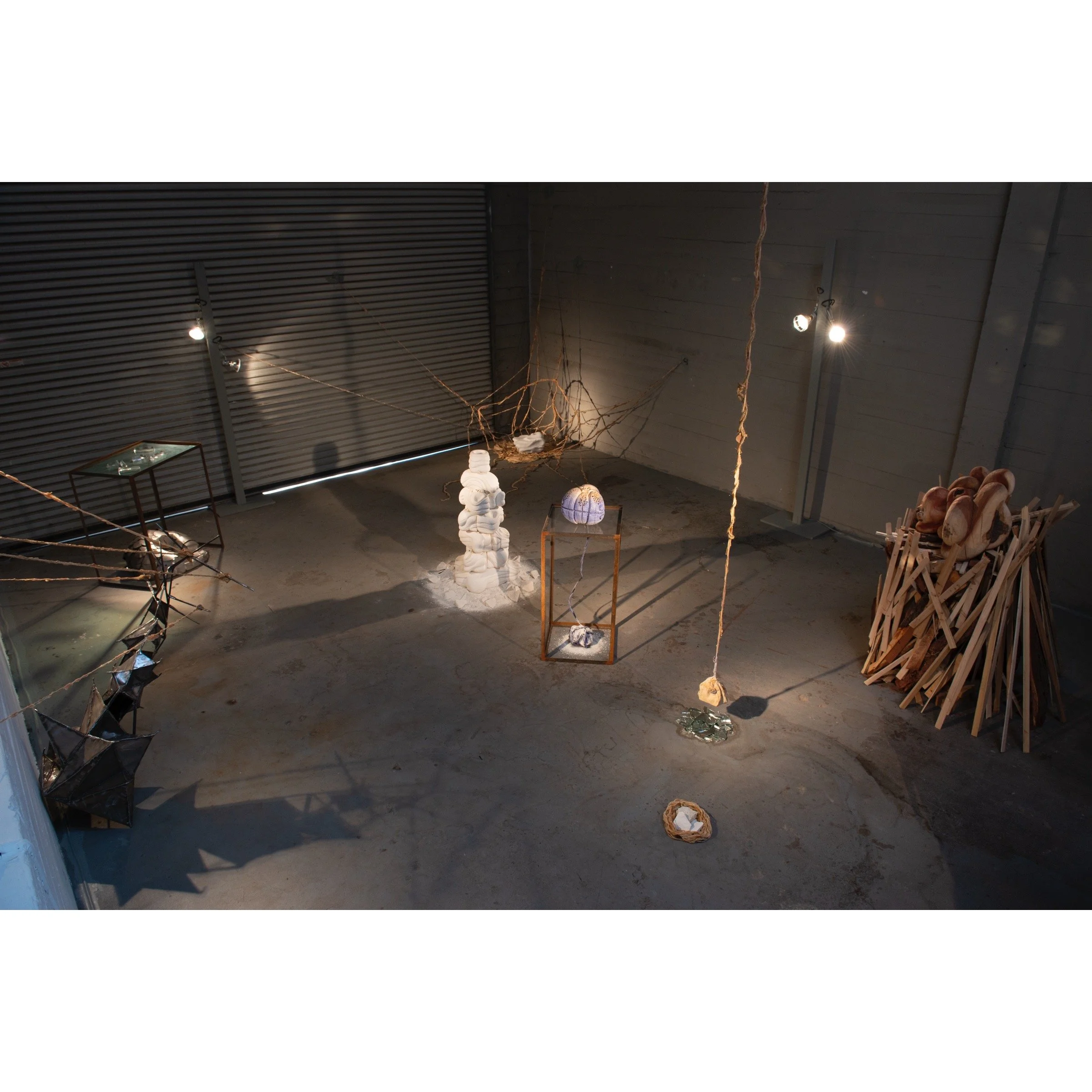



Omphalos
2021
Hand-carved limestone
4.5 ft x 2.5 ft x 2.5 ft
According to mythology, Zeus released four eagles from the four corners of the Earth which was believed to be flat, and they met at Delphi which was henceforth known as the navel of the world or “omphalos”. In Greek mythology this “omphalos” or “the navel” of the Earth was believed to be the central point from which terrestrial life originated. In Delphi, Greece, a holy stone was housed in the Temple of Apollo as a sacred object representing the exact center of the universe. Delphi was an ancient religious sanctuary dedicated to the Greek god Apollo. Developed in the 8th century B.C., the sanctuary was home to the Oracle of Delphi and the priestess Pythia, who was famed throughout the ancient world for divining the future and was consulted before all major undertakings. The oracle at Delphi originally belonged to Gaea, the Earth goddess, and was guarded by her child Python, the serpent. Apollo is said to have slain Python and founded his own temple.
Stemming from an interest in origin stories, the rise and fall of civilizations, and the rise and fall of all life on Earth, this sculpture, Omphalos, represents a navel of the earth, a volcanic opening in the Earth's surface, or an organic bodily orifice. An orifice and a volcano are connected because they are both places of birth and death and pathways of change and transmutation. The hand-carved limestone, made up of millions of ancient calcium carbonate skeletons and shells, interlocks like a vertebra, referencing the prehistoric bones from which it is formed. Resembling something in between rolls of fat, volcanic lava flows, and mountainous erosion the artist is interested in abstraction, ambiguity, and the “in-between” spaces that we inhabit on Earth—spaces of change, mysticism, confusion, evolution, and processes that are universal, omnipresent, and prehistoric. Omphalos, as is the case with many of Krebs’ sculptures, is an enigmatic object which could have been excavated from a pre-historic Stone Age settlement or an ancient Greek temple and placed into a contemporary gallery setting for us to study and ponder its purpose in antiquity.